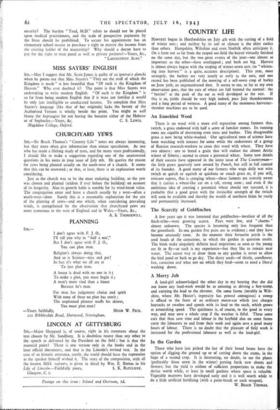CHURCHYARD YEWS
SIR,—Sir Beach Thomas's " Country Life " notes are always interesting, but they more often give information than arouse speculation. As one who has made a lifelong study of trees, and for many years professionally, I should like to make a suggestion regarding one of the unanswered questions in his notes in your issue of July 9th. He queries the reason for yews being planted usually on the south-west of a church. It seems that this can be answered ; or that, at least, there is an explanation worth considering.
Just as the church was to be the most enduring building, so the yew was chosen and planted (seldom if ever before the building) on account of its longevity. Also its growth habit is notable for its wind-break value. The congregation enter and leave a church usually by a west—often a south-west---door. Surely this is a reasonable explanation for the site of the planting of yews—and one which, when considering prevailing winds, is strengthened by the observation that churchyard yews are more numerous in the west of England and in Wales.—Yours, &c.,
A. S. THORNEWILL.


























 Previous page
Previous page